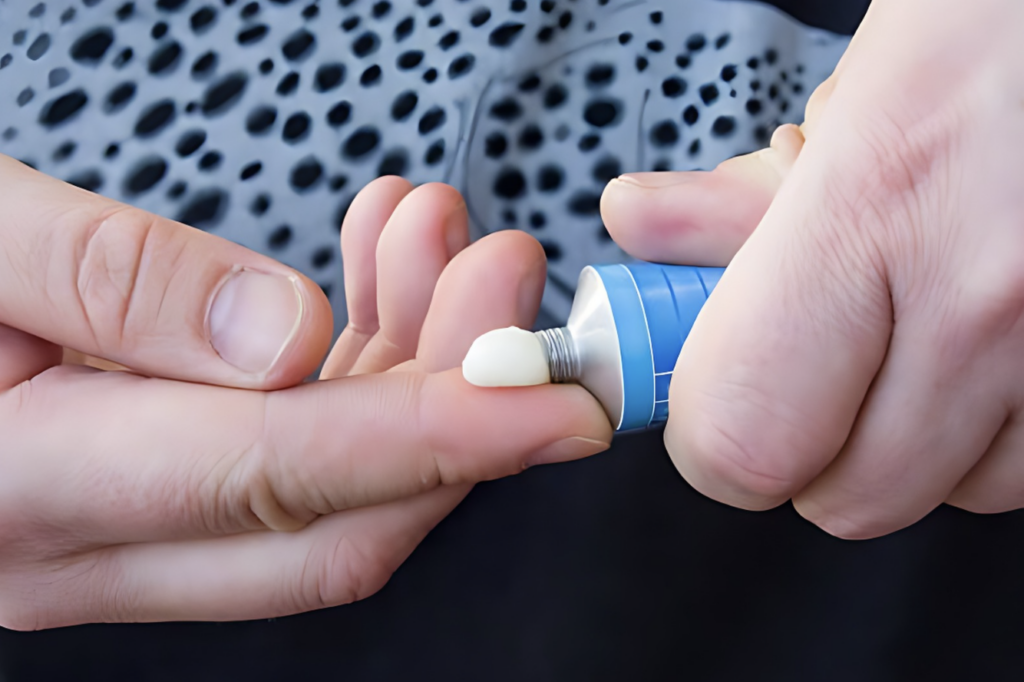Alternative Treatments, Skin Care
Effective Home Remedies for Skin Tags
Skin tags are a common skincare irritation, lying inconspicuously but persistently on our bodies. In this comprehensive guide, we delve into the world of home remedies, providing a plethora of methods to say goodbye to those annoying skin tags.
These harmless growths might create discomfort and self-consciousness. Fortunately, the route to smoother skin does not require intrusive operations or costly treatments. From pantry basics to herbal concoctions, join us on a journey to rediscovering confidence and comfort in your own skin, all from the convenience of your own home. Say goodbye to skin tags naturally with our expertly curated collection of home cures.

Understanding Skin Tags
Skin tags are tiny, benign growths that hang from the skin. They are also known as acrochordons and are prevalent in adults, particularly those suffering from type 2 diabetes or insulin resistance. Skin tags are not malignant and do not enhance your chances of acquiring cancer.
Causes and Risk Factors
The specific etiology of skin tags is unknown, however, genetics and the human papillomavirus (HPV) may be involved. Skin tags are more prevalent in older folks and those who are overweight or obese. Pregnant women may acquire skin tags as a result of hormonal changes.
Identifying Harmless vs. Cancerous Skin Tags
Skin tags are mostly innocuous and do not require medical attention. However, it is critical to distinguish between benign skin tags and malignant tumors. Cancerous skin tags are uncommon, but they do exist. A malignant skin tag can be identified by its rapid growth, unusual shape, and changes in color or texture. If you are unsure if a skin tag is benign or malignant, you should visit a healthcare expert.
Skin tags are a frequent and benign skin disease. While the precise etiology is unknown, they are more prevalent in specific populations and do not raise the chance of acquiring cancer.

Natural Removal Methods
Skin tags are innocuous growths that may occur on the skin. While not harmful, they can be unattractive and inconvenient. Fortunately, there are various natural ways to remove skin tags at home.
Home Remedies and Essential Oils
Home remedies and essential oils are popular ways to remove skin tags organically. Tea tree oil, castor oil, and apple cider vinegar are among the most popular essential oils for this purpose. Tea tree and castor oils are antibacterial and can help relieve inflammation. Apple cider vinegar has acidic characteristics that can help dry out skin tags.
To use essential oils for skin tag removal, combine a few drops with a carrier oil, such as coconut or almond oil, and apply to the skin tag. Wrap the area in a bandage and leave it on for several hours or overnight. Repeat daily until the skin tag falls off.
Safe Practices for At-Home Removal
To minimize infection and damage, it is critical to use safe skin tag removal techniques at home. Before attempting to remove a skin tag, wash it with soap and water and thoroughly dry it. To remove the skin tag at the base, use a clean, sharp pair of scissors or nail clippers. Apply a small amount of antibacterial lotion to the region and wrap it in a bandage.
Another safe way to remove skin tags is to use salicylic acid-based removal lotions. Salicylic acid is an antioxidant that can help dissolve skin tags. Apply cream to the skin tag and wrap it in a bandage. Repeat daily until the skin tag falls off.
Other natural ways to remove skin tags include banana peels, vitamin E oil, garlic, oregano oil, and baking soda. While these procedures may work for some people, it is critical to consult with a medical professional before attempting to remove a skin tag at home.

Prevention and Aftercare
Lifestyle Changes and Prevention Strategies
Skin tags are normally harmless, but they can be ugly and uncomfortable. Fortunately, a few simple lifestyle adjustments and prevention methods can help lower the risk of getting skin tags.
First and foremost, it is critical to maintain a healthy weight and avoid excessive weight gain, as skin tags are more common in overweight individuals. Furthermore, wearing loose-fitting clothing and avoiding tight jewelry will help prevent friction in regions where skin tags are more likely to form, such as the armpits, breasts, and eyelids.
It is also critical to maintain skin folds clean and dry, as moisture can promote the growth of skin tags. After showering, apply a light moisturizing moisturizer to the skin creases.
Post-Removal Care to Minimize Scarring
If you have removed a skin tag, you need to take adequate care of the area to avoid scarring and infection. To prevent infection after removing a skin tag, apply antibiotic ointment and wrap the area with a sterile bandage.
It is also vital to avoid picking at the region or exposing it to too much friction, as this can cause scarring. If scarring develops, there are a few natural therapies that can help minimize its appearance, such as applying aloe vera gel or vitamin E oil to the affected area.
Overall, by taking a few basic precautions and following correct post-removal care, you can significantly reduce the risk of developing skin tags and minimize scarring after removal.

When to See a Professional
While there are various natural ways or home remedies to remove skin tags, some may necessitate professional help. To avoid issues, you should know when to contact a dermatologist or another healthcare specialist.
Potential Complications
Removing skin tags on your own can result in consequences like infection, bleeding, and scarring. Before attempting any removal treatments, make sure the area is well-cleaned and disinfected. Furthermore, if the skin tag is located in a sensitive place, such as near the eyes or genitals, seek professional assistance to avoid pain or injury.
When to Consult a Dermatologist
If you are concerned about the appearance or growth of a skin tag, visit a board-certified dermatologist. They can inspect the tag to decide whether it is benign or if a biopsy is required to rule out skin cancer.
Dermatologists can remove skin tags with a variety of medical treatments, including cauterization, heat, ligation, cryotherapy, electrocautery, and surgical thread. These operations are generally safe and effective, and they may be reimbursed by health insurance if considered medically necessary.
In conclusion, while natural methods can be helpful in eradicating skin tags, it is critical to understand when to seek professional assistance to avoid complications and guarantee that the tag is benign. A board-certified dermatologist can provide safe and effective removal methods and decide whether a biopsy is required.
Conclusion
In conclusion, navigating the realm of skincare challenges does not have to be difficult or expensive. With so many home remedies and natural solutions at your disposal, removing skin tags can become a doable task. From the simplicity of apple cider vinegar to the soothing characteristics of tea tree oil, the remedies given in this book are both effective and gentle in creating brighter, smoother skin.
Remember, patience and consistency are essential when going on a skincare journey. By including these home remedies into your routine, you empower yourself to take control of your skin’s health and attractiveness, embracing a holistic approach that acknowledges nature’s innate miracles. So, say goodbye to those pesky skin tags and enjoy the greater confidence that comes from naturally caring for your skin.
Trusted Health, Wellness, and Medical advice for your well-being



